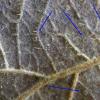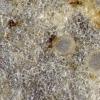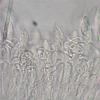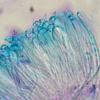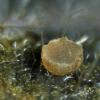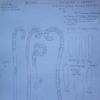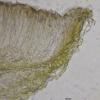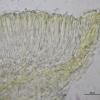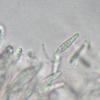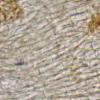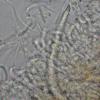
21-12-2025 09:32
Hello.A tiny ascomycete found embedded in wood in

20-12-2025 23:08
Patrice TANCHAUDBonsoir, récolte sur sol sablonneux dans l'arri�

20-12-2025 15:47
Mirek GrycHi.These grew on pine wood that was heavily covere

18-12-2025 21:17
Pol DebaenstThe identification took me to Byssonectria deformi

15-12-2025 07:09
 Danny Newman
Danny Newman
indet. Rutstroemiaceae sp. on unk. fallen leavesMc

19-12-2025 10:10
Patrice TANCHAUDBonjour, récolte réalisée en milieu dunaire, a

18-12-2025 17:23
 Bruno Coué
Bruno Coué
Bonjour,je serais heureux d'avoir votre avis sur c

18-12-2025 18:07
Margot en Geert VullingsThese plumes were found on rotten wood.They strong
 Hi to everyone, bonjour à tous
Hi to everyone, bonjour à tousQuelqu'un pourrait il m'orienter pour cette récolte sur feuille de ronce ?
Would someone give me a clue for the following collection on dead Rubus leaves ?
Apos urcéolées, semi immergées dans l'epiderme de la feuille , diamètre 0,1-0.2 mm, gris foncé.
Asques H+, IKI bleu, 43_52 x 6,5-7
Spores 11-15 x 2-2,2 , clavées, G = 0,5-1 par de très fines guttules à ch. pôle
Paraphyses spiralées, dépassant largement les asques, remplies de vauoles réfringentes bleu-vert dans le CRB
EE text prismatica , prolongé par des poils de type ''Phialina''
Merci beaucoup par avance.
Amitiés
Michel
cheers
Thomas

Spores clavate to conical; spores smooth; spores without septae; spores in ligth microscope hyalin; spores not reacting to reagents; spores length 11 µm, width 2 µm; ascus wall unitunicat; ascus apical apparatus J+; ascus length 65 µm; with 8 spores; paraphyses as long as the asci; paraphyses cylindrical; paraphyses with coiled apices; paraphyses width 2 µm; textura prismatica; outer side smooth; excipulum hyalin. On/with members of Rosaceae; substrate/habitat leaves. [Description auto-generated from character input in MycoKey.]

I also just looked at my drawing.... you have certainly the same, substrate is also identical.
There are a couple of described species with curled paraphyses, but they do not perfectly fit:
Pezizella orbiliodes Feltgen on Petasites, but the spores are smaller and the excipulummstains blue in iodine (not so in our fungus - you can test).
Naevia vitellina on Aegopodium is actually similar but the apothecia are elongate and break through the epidermis, though our fungus might also be erumpent.
Naevia lutescens was found in 2000 on Lamiastrum in Luxembourg, there the asci were simple-septate.
Calloria circinella on Cypripedium in China : also simple-septate and spores different.
Michel, did you actually see Phialina-hairs? Any photo? My section looks like this (live and in KOH)
Zotto

I'm glad to hear from you. Great document, this image of Zotto'hands drawing !
My fungus looks very similar to yours and I agree it doesn't quite match any of the known species cited though P. (or N.) orbilioides appears the closest among them
Sorry Zotto the phialina type terminal cells of the EE concern another fungus .
Here are images of the ectal and the margin ''cells'' , up to 3,5 µm (only 2 µm fot the paraphyses) large and full with vbs. Only one free spore , which shows the same figure as yours .
My collection data : MH 50512 La Barre de Monts , Vendée, inner side of Rubus fructicosus leave , soc F. dumorum.
Amitiés
Michel

